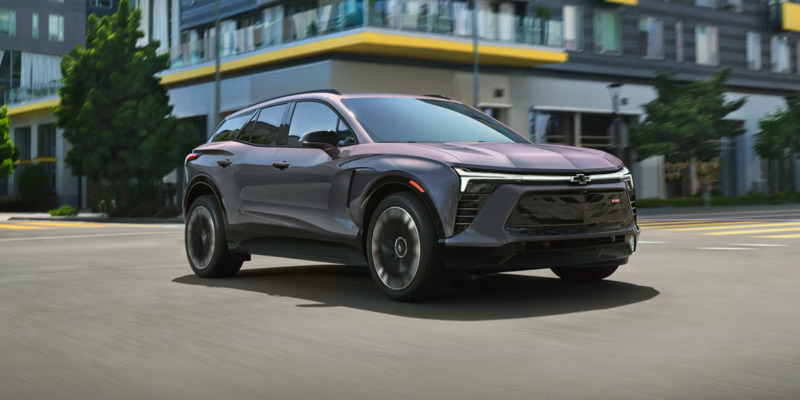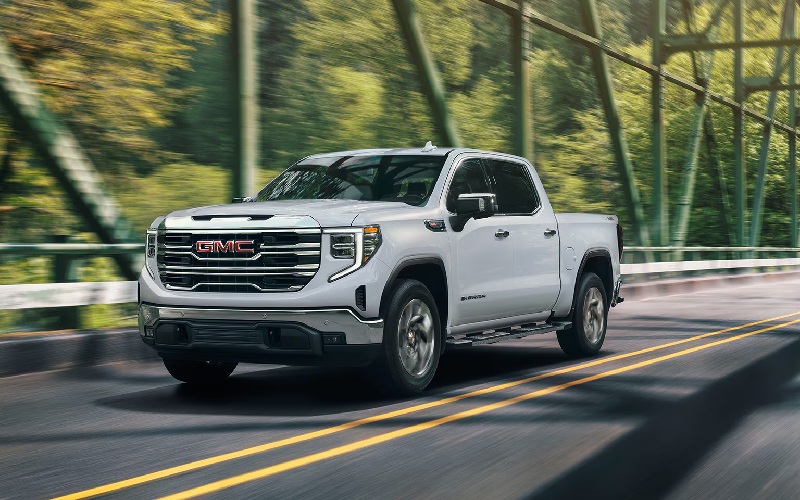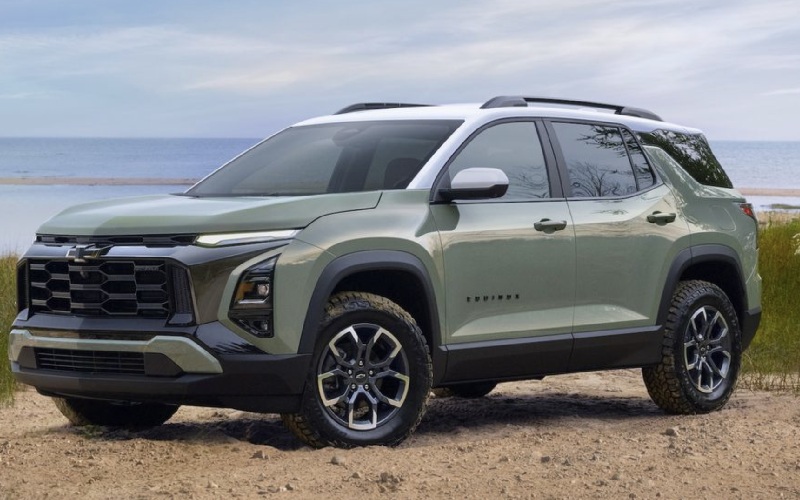Chevy Blazer EV Winter Performance: Canadian Climate Guide
The Chevy Blazer EV represents General Motors’ commitment to expanding its electric vehicle lineup with versatile, all-season options suitable for the diverse Canadian climate. While manufacturer range estimates provide a baseline expectation, real-world performance remains the true test for any electric vehicle, particularly during harsh Canadian weather. Range Variability in Canadian Climate The Science Behind […]
The Chevy Blazer EV represents General Motors’ commitment to expanding its electric vehicle lineup with versatile, all-season options suitable for the diverse Canadian climate. While manufacturer range estimates provide a baseline expectation, real-world performance remains the true test for any electric vehicle, particularly during harsh Canadian weather.

Range Variability in Canadian Climate
The Science Behind Cold Weather Range Reduction
Like all electric vehicles, the Blazer EV experiences range fluctuations related to temperature variations. This phenomenon stems from several scientific factors rather than design flaws:
- Battery Chemistry Effects: Lithium-ion batteries experience increased internal resistance in cold temperatures, reducing energy delivery efficiency. The Blazer EV battery management system works continuously to maintain optimal operating conditions, but physics presents certain unavoidable challenges.
- Cabin Heating Requirements: Unlike conventional vehicles that utilize waste heat from the combustion engine, the Blazer EV must generate cabin heat using energy from the battery. This additional energy draw becomes significant in sub-zero temperatures common across Canadian regions.
- Battery Conditioning Systems: The Blazer EV incorporates thermal management technology that maintains battery temperature. While this system preserves battery health, it consumes additional energy during extreme cold.
- Regenerative Braking Efficiency: Cold batteries cannot accept charge as readily, potentially reducing the effectiveness of regenerative braking—a key range-extending feature during normal temperature operation.
Seasonal Variation Expectations
Canadian Blazer EV owners report predictable seasonal patterns in range performance:
- Summer Driving: Many owners report achieving or even exceeding the rated range during ideal summer conditions between 15-25°C.
- Spring/Fall Transition: Range typically declines by 10-15% during shoulder seasons when temperatures hover between 0-10°C and occasional cabin heating becomes necessary.
- Winter Performance: During peak winter months with sustained temperatures below -10°C, 20-40% range reductions represent the typical experience, depending on driving conditions and cabin comfort preferences.
Real-World Range Reports from Canadian Owners
Northern Province Experiences
Blazer EV owners in northern regions face the most substantial range challenges but have developed effective strategies to maintain reliable transportation:
“I’ve tracked my Blazer through two winters now. On the coldest days around -30°C, I see about 65% of the rated range, but the vehicle remains completely reliable. Preconditioning while plugged in makes an enormous difference.”
Another northern driver reports: “The range indicator adapts quickly to driving conditions. It might show a conservative estimate when you first start in extreme cold, but often adjusts upward after the battery warms during driving.”
Maritime Experience
Coastal region drivers experience different challenges with the Blazer EV:
“Our winters aren’t as cold, but the humidity and wind create unique conditions. I notice my range drops about 25% in winter, but the heated seats and steering wheel let me keep the cabin temperature lower while staying comfortable.”
Prairie Feedback
Drivers across central provinces provide particularly valuable insights due to extreme temperature swings:
“During the -20°C cold snaps, my commuting range decreases noticeably. I’ve found that garage parking overnight and workplace charging, even at standard 110V outlets, easily compensates for the reduced range.”
Maximize Winter Range: Practical Strategies
Preconditioning Techniques
The Blazer EV offers several preconditioning options that significantly impact winter range performance:
- Scheduled Departure: Programming regular departure times through the vehicle interface or mobile app enables automatic preconditioning while connected to a charger. This feature warms the battery and cabin without depleting driving range.
- Remote Start Functionality: The mobile app allows on-demand preconditioning, ideal for unpredictable schedules. Owners report this feature provides approximately 10-15% better initial range than cold starts.
- Charging Timing: The vehicle generates heat during charging. Scheduling charging completion shortly before departure combines battery heating benefits with optimal charge levels.
Driving Techniques for Range Preservation
Experienced Blazer EV owners employ specific driving strategies to maximize winter range:
- Progressive Acceleration: Gentle acceleration from stops preserves energy, particularly important when battery efficiency is compromised by cold temperatures.
- Speed Management: Highway efficiency drops significantly at speeds above 110 km/h, an effect amplified in cold weather. Reducing highway speed by even 10 km/h can extend range by 5-10%.
- Regenerative Braking Utilization: Despite reduced efficiency in cold weather, maximizing regenerative braking through one-pedal driving still recovers valuable energy. The adjustable regeneration settings allow drivers to find their optimal balance.
- Route Selection: Choosing routes that avoid steep hills and allow consistent speeds improves overall efficiency, sometimes offsetting much of the cold-weather penalty.
Climate Control Strategies
The cabin climate system represents the largest discretionary energy draw in winter conditions:
- Heat Pump Advantage: Models equipped with heat pump technology demonstrate significantly better range preservation, operating with up to three times the efficiency of resistive heating.
- Zone Heating Utilization: Directing climate control only to occupied seats reduces energy consumption substantially compared to heating the entire cabin.
- Seat and Steering Wheel Heaters: These features warm occupants directly with minimal energy use. Owners report maintaining comfort with cabin temperatures 3-5°C lower when utilizing these targeted heating elements.
- Pre-Entry Warming: Using the mobile app to warm the cabin while still connected to a charger preserves battery energy for driving range.
Battery Management and Charging Considerations
Optimal Charging Practices
Cold weather charging requires special consideration:
- DC Fast Charging Performance: The Blazer EV battery management system may limit fast-charging speeds when battery temperatures are extremely low. Experienced owners suggest driving for 15-20 minutes before fast-charging in very cold conditions to allow battery warming.
- Home Charging Timing: Scheduling charging for completion shortly before departure ensures the battery remains at an optimal temperature for immediate use.
- Charge Level Management: While maintaining a higher state of charge improves immediate availability in cold weather, limiting routine charging to 80-90% during regular use promotes battery longevity.
Battery Protection Features
The Blazer EV incorporates several systems that maintain battery health in extreme conditions:
- Temperature-Based Power Limitation: The vehicle may temporarily restrict maximum power output to protect battery cells in extreme cold, generally resolving as the pack warms during operation.
- Battery Heating Prioritization: During extremely cold starts, the vehicle prioritizes battery conditioning, potentially extending the time before full performance becomes available.
- Thermal Management During Charging: The battery management system allocates energy to maintain cell temperature during charging, sometimes extending charging duration but preserving long-term battery health.
Plan for Winter Travel
Range Confidence Building
Owners develop reliable range expectations through experience:
- Conservatism in Early Ownership: New owners benefit from adding a 30% buffer to range estimates during their first winter until they develop familiarity with their specific vehicle’s patterns.
- Journey Planning Tools: The Blazer EV navigation system incorporates temperature and elevation into range projections. Many owners also utilize third-party applications that integrate weather forecasts into route planning.
- Charging Network Familiarity: Understanding the reliability and capabilities of charging infrastructure along frequent routes builds confidence for winter travel.
Emergency Preparedness
Prudent winter driving requires preparation regardless of powertrain type:
- Range Reserve Maintenance: Experienced EV drivers maintain a minimum 15-20% state of charge reserve during winter journeys, similar to maintaining a partial fuel tank in conventional vehicles.
- Portable Charging Options: Some owners carry a portable Level 1 charging cable compatible with standard outlets, enabling slow charging at virtually any location with electrical service.
- Cold Weather Kit: Basic emergency supplies remain essential for any Canadian winter driving, including warm clothing, emergency blankets, and communication devices.
Future Forward: Continuous Improvement
Software Updates
The Chevrolet commitment to over-the-air updates continues to refine the Blazer EV’s cold-weather performance:
- Battery Management Evolution: Software improvements regularly enhance thermal management algorithms, sometimes delivering noticeable range improvements without hardware changes.
- User Interface Refinements: Updates frequently improve range estimation accuracy in challenging conditions, reducing range anxiety through better predictability.
- Feature Enhancement: New functionalities often appear through software updates, including additional preconditioning options and energy management tools.
Community Knowledge Sharing
The growing Blazer EV owner community actively shares experiences and best practices:
- Online Forums: Dedicated discussion groups provide regional insights and model-specific recommendations.
- Seasonal Adjustment Patterns: Experienced owners help newcomers understand the predictable seasonal variations they can expect throughout the Canadian climate cycle.
- Charging Infrastructure Updates: Community reports on new charging locations and reliability prove invaluable for trip planning.
Chevy Blazer EV: A Practical Year-Round Option
When operated with appropriate expectations and techniques, the Chevy Blazer EV demonstrates remarkable adaptability to Canadian winter conditions. While cold weather inevitably impacts range, owners consistently report that thoughtful preparation and driving habits make the vehicle a practical year-round option across all Canadian regions.
Understanding the science behind cold-weather performance, implementing proven efficiency strategies, and planning journeys with realistic expectations ensures Blazer EV owners enjoy confident electric driving throughout the year. As battery technology continues to evolve and software improvements refine vehicle performance, the already impressive cold-weather capability of the Blazer EV will only improve.
For Canadians considering the transition to electric mobility, the real-world winter performance of vehicles like the Blazer EV demonstrates that modern EVs have overcome the significant challenges posed by our climate, delivering practical, reliable transportation regardless of season.



